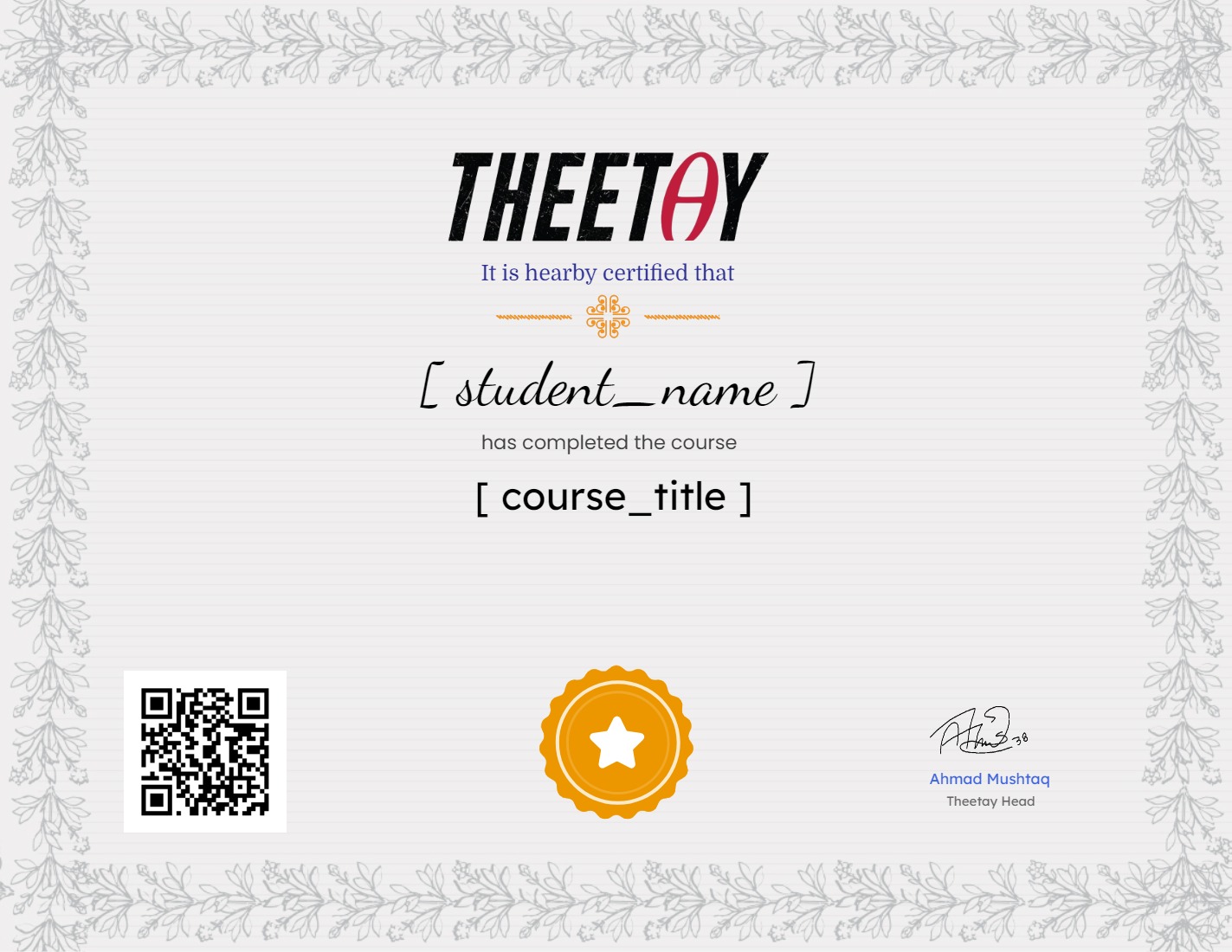SQL for Beginners: Learn SQL using MySQL and Database Design

About Course
Learn SQL and MySQL for free with this comprehensive course. This course covers SQL basics, MySQL in-depth, database design, data analysis, and hands-on tutorials. You’ll learn how to set up an online cinema booking database and get practical exposure to real-world applications. This course is perfect for aspiring tech-savvies, data enthusiasts, and professionals looking to amplify their career horizons.
This course is taught by Tim Buchalka and Jean-Paul Roberts, who have a combined 80 years of programming experience. They are experts in their field and are skilled in breaking down intricate topics. This course is completely free and is available on Udemy, Udacity, Coursera, MasterClass, NearPeer, and other platforms.
Key features:
- Learn SQL and MySQL
- Master database design and analysis
- Real-world applications
- Hands-on tutorials
- Cross-platform installation guides
- Practical exercises with step-by-step video solutions
Start your journey into the world of SQL and databases today!
What Will You Learn?
- Have a detailed knowledge and understanding of using MySQL, one of the most widely used databases in the world.
- Obtained a knowledge of SQL, and MySQL, allows students to apply for jobs in the IT sector.
- In-depth knowledge of database design will give students an edge over other applicants.
Course Content
Course Introduction
-
Welcome to the Course
01:28 -
A Message from the Professor
-
Syllabus Explanation
03:42
Installation and Setup
-
Section Introduction
00:41 -
Databases SQL and MySQL
03:08 -
Relational Database Management System
02:18 -
MySQL Installation for Windows
15:00 -
MySQL Installation for Mac
12:17 -
MySQL Installation for Linux
11:07 -
MySQL Workbench Overview
13:13 -
Create Database
03:24
Data Definition Language
-
Section Introduction
01:32 -
Data Types
06:34 -
Primary and Foreign Keys
02:53 -
Creating the Coffee Store Database
08:54 -
Modifying Tables Adding and Removing Columns
03:08 -
Deleting Tables
01:28 -
Truncating Tables
01:39
More On Alter Table
-
Section Introduction
01:26 -
Creating Our Test Database
05:30 -
Add and Remove Primary Key
05:25 -
Add and Remove Foreign Key
04:56 -
Add Unique Constraint
03:25 -
Change Column Name
03:15 -
Change Column Data Type
04:44 -
Exercise 1
01:30 -
Solution 1
08:27
Data Manipulation Language
-
Section Introduction
00:50 -
Inserting Data Into Tables
05:37 -
Updating Data in Tables
06:07 -
Deleting Data from Tables
02:49 -
Completing the Coffee Store Database
02:38
Selecting from a Table
-
Section Introduction
01:14 -
Select Statement
01:46 -
Where Clause
04:53 -
Using Inequality Symbols
03:03 -
Null Values
03:10 -
Exercise 1
01:06 -
Solution 1
03:55 -
In Not In
03:44 -
Between
04:04 -
Like
04:52 -
Order By
06:19 -
Exercise 2
00:55 -
Solution 2
04:23 -
Distinct
05:11 -
Limit
02:56 -
Column Name Alias
02:03 -
Exercise 3
00:50 -
Solution 3
03:45
Selecting From Multiple Tables
-
Section Introduction
01:08 -
What Are Joins
03:08 -
Inner Join
08:55 -
Left Join
05:23 -
Right Join
03:15 -
Joining more than Two Tables
04:33 -
Exercise 1
01:06 -
Solution 1
05:55
Database Design
-
Section Introduction
01:23 -
Normalization – What is it
05:23 -
1st Normal Form (1NF)
03:30 -
2nd Normal Form (2NF)
06:27 -
3rd Normal Form (3NF)
09:30 -
Relationships
01:05 -
Relationships – One to One
02:30 -
Relationships – One to Many
02:01 -
Relationships – Many to Many
04:00 -
Constraints
03:53
Creating a Cinema Booking System Database
-
Section Introduction
01:11 -
Database Schema Overview
07:26 -
Create Films Table
04:05 -
Create Customers Table
02:53 -
Create Rooms Table
02:19 -
Create Screenings Table
04:45 -
Create Seats Table
03:53 -
Create Bookings Table
03:52 -
Create Reserved_Seat Table
04:35 -
Insert the Data
05:22
Aggregate Functions
-
Section Introduction
00:41 -
What are Aggregate Functions
02:30 -
Count
02:38 -
Sum
02:36 -
Min and Max
02:39 -
Average
02:09 -
Exercise 1
00:46 -
Solution 1
04:09 -
Grouping Data
08:52 -
Having Clause
01:44 -
Exercise 2
00:44 -
Solution 2
04:11
Subqueries
-
Section Introduction
00:32 -
What Are Subqueries
04:11 -
Non-Correlated Subqueries Part 1
05:11 -
Non-Correlated Subqueries Part 2
05:47 -
Correlated Subqueries
04:41 -
Exercise 1
01:19 -
Solution 1
06:59
MySQL Functions – String Functions and Date Functions
-
Section Introduction
01:07 -
What Are MySQL Functions
01:46 -
Concatenation
06:49 -
Substrings
08:09 -
Upper and Lower Case
03:50 -
Exercise 1
01:12 -
Solution 1
09:52 -
Date Function
07:29 -
Month Function
04:37 -
Year Function
03:11 -
Exercise 2
01:07 -
Solution 2
04:08
Challenges
-
Section Introduction
00:56 -
Challenge One
00:27 -
Solution One
01:50 -
Challenge Two
00:22 -
Solution Two
04:34 -
Challenge Three
00:26 -
Solution Three
03:31 -
Challenge Four
00:26 -
Solution Four
04:08 -
Challenge Five
00:37 -
Solution Five
07:20 -
Challenge Six
00:38 -
Solution Six
03:55
Bonus Material
-
Bonus – Please Watch!
00:48
Earn a certificate
Add this certificate to your resume to demonstrate your skills & increase your chances of getting noticed.

Student Ratings & Reviews


